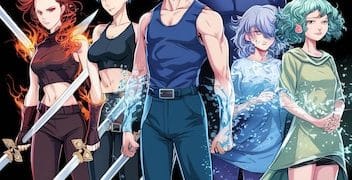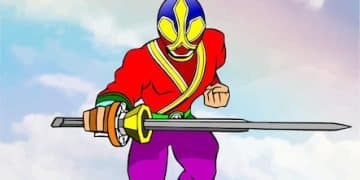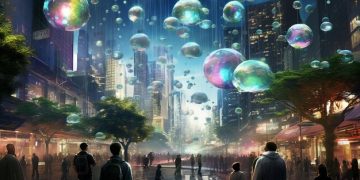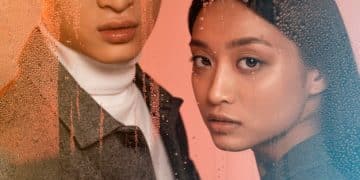Shonen vs Seinen: 3 Key Art Style Differences
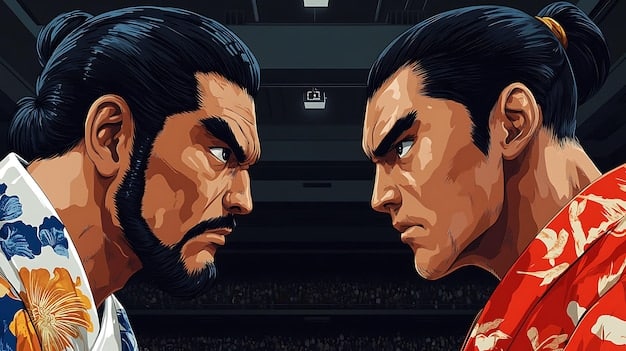
The three biggest differences between shonen and seinen manga art styles are the target demographic influencing the intensity of action, the complexity of character designs, and the realism depicted in the overall artwork.
Manga art is incredibly diverse, but one key distinction lies between shonen and seinen. Understanding what are the 3 biggest differences between Shonen manga and seinen manga art styles? This knowledge opens a new level of appreciation for the artistry and storytelling techniques employed by manga creators.
What Makes Shonen and Seinen Manga Art Styles Different?
Shonen and seinen manga cater to different demographics: shonen targets young boys, while seinen is aimed at young adult men. This audience difference significantly impacts the art style, influencing the types of stories told and how they are visually presented.
Let’s dive into these key differences, exploring how they shape the overall reading experience and artistic choices.
Target Demographic and Storytelling
The primary target audience heavily influences the art style. Shonen, geared towards younger boys, often features more straightforward plots and characters. Seinen manga, aimed at older men, explores more complex themes and nuanced narratives.
This disparity in storytelling is visually reflected in the art. Let’s see some instances:
- Shonen Exaggeration: Exaggerated expressions and dynamic action sequences are common in shonen to create excitement and energy.
- Seinen Nuance: Seinen art favors realism and subtle emotional portrayals, reflecting the genre’s more mature themes.
- Complex Plotlines: More detailed backgrounds and character designs in seinen contribute to the complex and mature storytelling.
Understanding the target demographic is key to understanding why these art styles diverge.
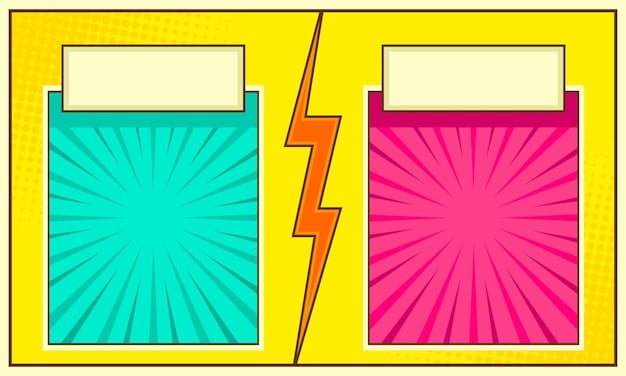
Character Designs: Simplicity vs. Complexity
Character designs are another area where shonen and seinen diverge significantly. Shonen characters are often designed to be easily recognizable and appealing to younger audiences, while seinen characters tend to be more complex and nuanced.
The level of detail and realism in character designs reflects the difference in target audience and intended narratives.
Shonen Character Design
Shonen character design usually leans into simplified styles that are easy to animate and resonate with younger audience. Simplicity is key here.
- Simplified Features: Shonen characters often have large, expressive eyes and clearly defined features for easy identification.
- Bright Colors: Vibrant colors are frequently used to make shonen characters visually appealing and energetic.
- Heroic Proportions: Idealized and heroic proportions are common, reinforcing the themes of strength and adventure.
Seinen Character Design
Seinen focuses on showing complex character dynamics on the page and complexity is key to their success.
Consider the following aspects:
- Realistic Proportions: Seinen characters tend to have more realistic body proportions and facial features, reflecting a mature aesthetic.
- Subtle Expressions: Subtlety in facial expressions and body language is used to convey complex emotions and motivations.
- Detailed Costumes: Clothing and accessories are often rendered with intricate detail, adding depth and realism to the character.
The way characters are designed is fundamental to these subgenres that are so different.
Realism vs. Exaggeration in Art Style
The level of realism is a defining factor of shonen and seinen manga art. Shonen often embraces exaggerated and stylized representations, while seinen aims for a more grounded and realistic depictions.
This difference in artistic approach extends to backgrounds, action sequences, and emotional portrayal.
Embracing Exaggeration in Shonen
Shonen employs exaggeration to amplify the excitement and impact of the story. Exaggeration is one of the key elements that helps set the tone in shonen.
Let’s explore ways this is applied:
- Dynamic Action: Action scenes are often highly stylized, with exaggerated movement and visual effects to create a sense of energy and excitement.
- Emotional Amplification: Emotions are portrayed through exaggerated facial expressions and body language for heightened impact.
- Fantastic Elements: Unrealistic and fantastical elements are commonly incorporated to enhance the sense of adventure and escapism.
The Grounded Realism of Seinen
Seinen seeks to immerse readers in a believable world inhabited by relatable characters. Keeping things grounded is key here.
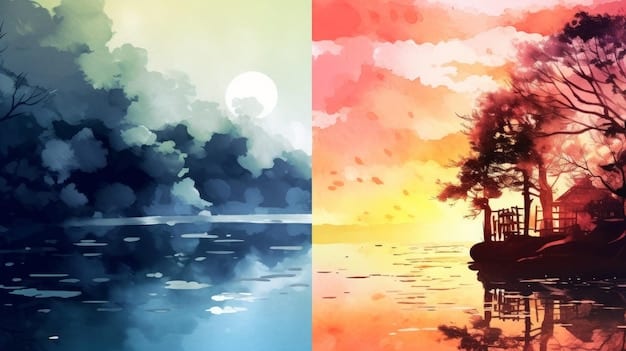
These can be applied in the following ways:
- Detailed Environments: Backgrounds and environments are rendered with meticulous detail to create a sense of depth and realism.
- Subtle Emotions: Emotional responses are portrayed with subtlety and nuance, reflecting the complexities of human relationships.
- Grounded Violence: Violence and action are depicted with a sense of weight and consequence, emphasizing the impact on characters and the world.
These set both genres apart, creating a unique experience
Line Work and Detailing Techniques
The approach to line work and detailing also differs significantly between shonen and seinen manga. Shonen typically uses bolder, simpler lines to create a sense of energy and clarity, while seinen often employs finer, more intricate lines to add depth and realism.
The level of detail in line work and shading contributes significantly to the overall aesthetic and tone of each genre.
The Bold Lines of Shonen
Shonen often utilizes bold lines to show action and dynamism with clarity.
- Clear Outlines: Thick, well-defined outlines are used to make characters and objects stand out, ensuring clarity and readability.
- Simplified Shading: Shading is often minimal and straightforward, focusing on conveying basic forms and shapes.
- Emphasis on Action Lines: Dynamic lines are used extensively to communicate movement and speed in action sequences.
The Intricate Lines of Seinen
Seinen is a more intricate style overall that focuses on showing realism and details on the page.
- Detailed Linework: Finer lines are used to create intricate details in characters’ clothing, hair, and facial features.
- Complex Shading: Sophisticated shading techniques are used to create depth, texture, and atmospheric effects.
- Realistic Textures: Lines are used to render realistic textures in backgrounds and objects, enhancing the overall sense of realism.
Both styles can give an extremely interesting feel to the page.
Panel Layout and Composition
Panel layout and compositions can also be different based on whether it is shonen or seinen. Shonen seeks to show dynamic pace to create excitement, while seinen focuses more on artistic composition and realistic flow of events on the page.
These stylistic choices are very important for the overall look and feel of each style.
Dynamic Pacing in Shonen
Shonen panel layouts are usually aimed at creating a fast-paced and dynamic feel, mirroring its target audience.
- Dynamic Shapes: Panels are often arranged in unconventional shapes and angles to create a sense of movement and energy.
- Overlapping Panels: Overlapping panels are used to convey a sense of speed and excitement in action sequences.
- Dramatic Angles: Extreme camera angles and perspectives are utilized to heighten the impact of key moments.
Artistic Composition in Seinen
Seinen panels are structured to follow a more realistic approach and style. They give an artistic element to scenes that is less apparent in shonen.
- Structured Layouts: Panels are arranged in a more structured and grid-like manner to create a sense of order and clarity.
- Scenic Panels: Large, detailed panels are used to showcase intricate backgrounds and environments, emphasizing atmosphere.
- Subtle Transitions: Panel transitions are often subtle and understated promoting a sense of flow and continuity.
Panel composition is at the heart of how each page is set up.
Color Usage in Shonen and Seinen Manga
Although most manga is published in black and white, color usage in promotional material, covers, and occasional inserts reveals distinct preferences between shonen and seinen. Shonen often utilizes bright, vibrant colors to grab the attention of a younger audience, while seinen tends towards a more subdued, realistic palette to cater to mature sensibilities.
Color choices reflect the overall aesthetic and thematic goals of each genre, influencing the reader’s perception and emotional response.
The Vibrancy of Shonen
Shonen embraces bold, eye-catching colors to create a sense of energy and excitement. The bolder colors typically are used to draw the reader in.
- Vibrant Palettes: Primary colors and high-contrast combinations are used to make characters and scenes visually striking.
- Energetic Effects: Bright colors are often employed to depict energy blasts, auras, and other supernatural phenomena.
- Appealing Designs: Characters’ costumes and hairstyles are often adorned with bold colors to enhance their visual appeal.
The Subtlety of Seinen
Seinen favors a more understated approach, using muted colors to create a sense of realism and atmosphere that mirror the stories they tell.
- Muted Tones: Earth tones, pastel shades, and grayscale palettes are used to create a subdued and realistic aesthetic.
- Atmospheric Effects: Color is used to create subtle atmospheric effects, such as fog, shadows, and natural lighting.
- Nuanced Portrayals: Characters’ emotions and motivations are often conveyed through subtle color cues in their expressions and attire.
While most manga is in black and white, color is still crucial for setting the tone of each style.
| Key Aspect | Brief Description |
|---|---|
| 👦 Target Demographic | Shonen targets young boys, influencing action intensity and plot simplicity. |
| ✍️ Character Design | Shonen uses simple, bright designs; Seinen opts for complex, realistic characters. |
| 🎨 Realism | Shonen exaggerates for excitement; Seinen strives for grounded, realistic portrayals. |
| 🖋️ Line Work | Shonen employs bold lines for clarity; Seinen uses intricate lines for detail. |
FAQ
▼
Shonen manga is primarily targeted towards young boys, typically between the ages of 8 and 18. The stories and themes often reflect the interests and concerns of this age group, focusing on adventure, friendship, and self-discovery.
▼
Compared to shonen, seinen manga tackles mature themes, complex narratives, and nuanced character development. It often explores darker, more profound topics, and may include intense violence, psychological elements, and mature relationships to resonate with its older demographic.
▼
Shonen manga often features dynamic action lines, clear character designs, and exaggerated expressions, making it easily identifiable. Bright colors, simplified shading, and a focus on visual energy enhance the fast-paced narratives, fitting for younger audiences.
▼
Realism is a defining trait in seinen manga, with detailed environments, subtle emotional expressions, and nuanced character portrayals. The grounded violence and realistic textures help immerse readers, offering a more believable and mature reading experience.
▼
Color schemes in shonen manga often boast vibrant and eye-catching palettes to attract younger viewers, whereas seinen manga typically uses muted tones to convey realism and complexity. These color choices enhance the themes of maturity and immersive storytelling.
Conclusion
Understanding the art style differences between shonen and seinen manga enriches your appreciation for the creators’ storytelling and artistic choices. From character design to panel layout, each element reflects the target demographic and intended message, offering unique reading experiences.
